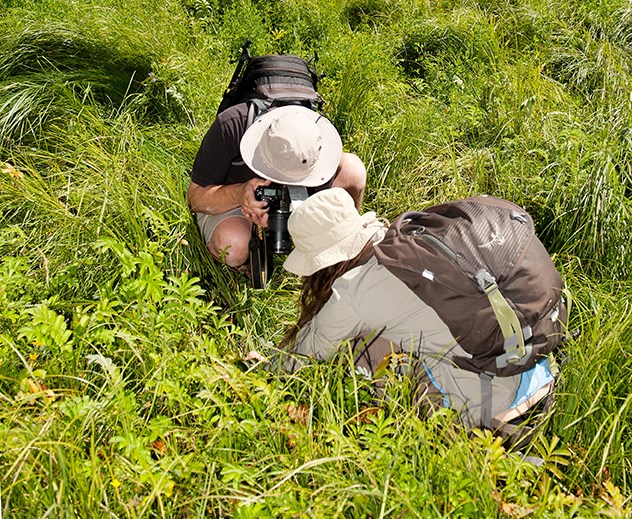Did you know Squamish has at least 30 kinds of moths?
That is just one discovery made when the Squamish Estuary played host to the community’s first BioBlitz on Friday.
For those unfamiliar with the global phenomenon, the event sees scientists and citizen scientists fan out in a particular area over a 24-hour period to find and record as many species of flora and fauna as possible.
“We have discovered quite a bit of new species that have never been recorded before,” said Judith Holm, a local citizen scientist and the Squamish BioBlitz leader.
One plant discovery was the colorful, tall-stemmed Henderson’s checker-mallow [Sidalcea hendersonii], a blue-listed species, meaning it is vulnerable to being endangered.
Humans are the main threat to the unusual plant, according to Holm.
“People want to be in the same habitat so there are almost none left in Oregon, it is rare in Washington and rare in British Columbia. In the Squamish Estuary there are lots of them,” she said.
Overnight last Thursday researchers discovered the 30 species of moths in Squamish.
“As far as I know this is completely new work to have an actual list,” Holm said.
Alaska Plantain [Plantago macrocarpa], a green plant with a fuzzy stem, was also discovered. It is a species that usually grows further north, Holm said.
The Squamish Estuary is the only location it has been seen so far in the Lower Mainland.
“So little has been documented in the estuary in the way of species lists,” said Holm.“It is exciting and it is a beginning.”
Beyond the primary goal of creating lists of the biodiversity in an area, the event also raises public awareness of the value of biodiversity, Holm said. “We really, really have to look after this estuary,” she said, adding dogs running loose are a threat to sensitive estuary habitat.



